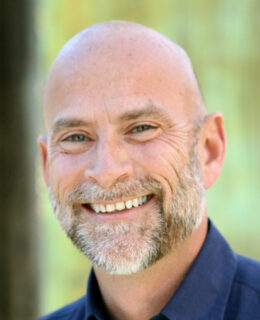We are pleased to welcome Theo Mandel to this month’s Human Factors and User Experience interview. Theo, an independent UX & User Research Consultant, author and educator, shares with Russ how he discovered User Experience (UX), how it’s changed over the past couple of decades, and how UX can (and should) be applied to multiple industries. Theo also shares about the importance of cognitive psychology training and the impact it makes on User Experience research.
Russ: Welcome! Why don’t we start by having you tell us a little bit about your background. How did you get your start in UX?
Theo: As an undergrad at Miami (Ohio), I started as a math major, but switched to psychology after losing interest in more abstract mathematics and took an “Introduction to Psychology” course from an incredible teacher. Little did I realize that this was the beginning of my journey into a life-long career in User Experience (UX) and user research!
I returned to my home town of Boulder, Colorado to earn a Master’s and PhD in Cognitive and Quantitative Psychology from the highly-respected psychology department at the University of Colorado. My advisor was Professor Walter Kintsch, a leading academic and researcher in the field of reading comprehension. Both my Master’s and PhD research utilized eye-tracking methodologies to determine where readers looked while reading text to see if it validated our theories of reading comprehension. Working with computers and eye-tracking technology in the late 70’s and early 80’s was quite a challenging experience!
While completing my PhD, I was awarded an internship at the IBM Printer division in Boulder. There, I conducted user research on industrial-sized printers and their documentation. That’s when I got a glimpse of my career path. I enjoyed applying my cognitive psychology background in industry to solve real-life, practical issues much more than continuing to teach and conduct academic research.
After completing my PhD degree, I took a job with IBM in Austin, Texas. In my 11-year career there, I conducted user research on IBM hardware, software products and documentation. I also became a member of the prestigious Common User Access (CUA) User Interface Architecture group, where our team designed and prototyped the object-oriented user interface (OOUI) for the new IBM OS/2 PC operating system. An OOUI was much more robust and user-oriented than the current graphical user interfaces (GUIs). Our group wrote the seminal book for PC software design in 1993, “Object-Oriented Interface Design: IBM Common User Access Guidelines,” which is still available on Amazon.com!
I moved on from IBM in 1993 and wrote the book, “The GUI-OOUI War: Windows VS. OS/2: The Designer’s Guide to Human-Computer Interfaces.” I have been an independent UX, user research consultant and educator ever since – for the past 25 years.
Russ: Please tell us about some of your favorite projects.
Theo: I have had the good fortune to work in a wide variety of industries and on a wide range of products in education, banking, payment processing, healthcare, medical devices and e-commerce. I’ve worked on industrial-strength (legacy) applications, web applications, websites, mobile apps and even medical devices. Some of my favorite projects include designing and testing educational websites and apps for K-12 students, parents, teachers and administrators for companies like Pearson Education and K12 companies. I also enjoyed designing healthcare and medical products, where I conducted field research by riding-along in ambulances and air-rescue helicopters. I have also co-founded a few software startup companies.
Russ: How do you think the UX field has changed since you began? Where do you see it going?
Theo: When I began in the UX field, many hardware and software products were “industrial-sized” and were used for commercial purposes. These products had a unique set of ergonomic and human factors aspects, as well as ease-of-use issues. At that time, the field of user experience and its foundation in cognitive psychology were not well-known or well-understood, so much of the efforts of UX practitioners then were focused on increasing executives’ awareness about their need for UX involvement in the design, development and testing process and showing the value (ROI – Return on Investment) of UX.
In the 1990’s, the UX focus migrated toward “personal” computing on Apple and Windows computers with more emphasis on the importance and role of UX in human-computer interaction. Then, the field moved towards web-based applications and sites, and now we have expanded to design and test mobile and wearable devices and their interfaces, which also have their own set of ergonomic and human factors aspects. Social media and personal health/wellness experiences are also a large focus for UX today.
In the future, UX’ers will have to address new user interface paradigms such as virtual reality (VR), enhanced voice technology, machine learning and artificial intelligence (AI). Also, the ability of current and future devices to monitor, capture and display data about our bodies, our activities and the world around us add another layer of complexity and scalability that pose a challenge yet offer new opportunities for us to expand our design concepts, principles and skills in the UX field.
Russ: You have worked in several industries, how is the application of the UX the same in these industries? And, in what ways has it been different?
Theo: One of my long-time interests and “themes” that I have both written and presented on, has been the universality of design principles based on proven psychology and perception theories, regardless of the individual product or industry. I wrote a chapter in my 1997 book on this topic, titled “Golden Rules of User Interface Design” (theomandel.com/resources/golden-rules-of-user-interface-design/). Many of the top icons in the UX field (Ben Schneiderman, Jakob Nielsen, etc.) have also focused on this topic. My understanding of these principles and diligence in always keeping them in mind has allowed me to successfully work in a wide variety of industries, including education, medical, healthcare, banking, payments processing, insurance, social media and e-commerce.
However, every product and industry has its own unique business and user goals, objectives and requirements. Also, we design and test for an ever-widening range of users. Designing or researching a product for a second-grade student is quite a different task than for a doctor or a banking customer. This is what makes every new project unique and exciting. Our UX field has grown to involve empathy and accessibility to address age, physical, mental and generational differences by creating personas and journey maps to guide us in our UX efforts.
Russ: User experience involves designers, behavioral scientists, technical communicators and others contributing. How do you mentor colleagues, who are not classically trained, to conduct UX research?
Theo: Conducting UX research involves a wide variety of skills and techniques that can be taught through education, mentorship and practice. First, UX research utilizes a wide variety of research methodologies and designs. A toolbox approach must be followed – what is/are the best research methodologies and designs for a product in various stages in the product design and development lifecycle? A lot of questions must be asked and answered:
- Is field research needed?
- Can/should the research be done remotely using video-conferencing technologies?
- Should the study be done in a one-on-one setting, in a usability lab?
- How many participants should be included in the study?
- How formal should a study be?
- Should all participants work with both versions of a product (within-subjects design) or should half use version 1 and half use version 2 (between-subjects design)?
- Should the study be explorative or task-driven?
- What study measures and data should be collected (qualitative and/or quantitative)?
- What are the appropriate analyses to conduct to best present study results?
- What industry product measurement tools should be used – Net Promoter Score (NPS), System Usability Scale (SUS), Software Usability Measurement Inventory (SUMI)?
- And the list of research questions goes on…
Russ: Lastly, what are the benefits of having a PhD in cognitive psychology and how does that make a contribution to UX?
Theo: As I have mentioned in this interview, the benefits of having a PhD in Cognitive Psychology have been tremendous in my career and in my contributions to the UX field. Without the PhD degree in the 1980’s, I would not have received my IBM internship and job offers from IBM, Honeywell and other large corporations. This was the beginning of a time where new PhDs could move from academia to industry for their careers. At that time, computer hardware and software companies started to realize that their products were difficult to use, caused user errors, required copious documentation and also required a large technical customer support staff.
To reduce product costs and support, and to be more competitive in their industry, companies realized that they needed to improve user performance and customer satisfaction. They turned to cognitive psychologists for our knowledge in human behavior, memory, perception and performance and our understanding of rigorous research methods.
My background in Cognitive Psychology was the basis for the books I wrote on software design and UX. My keynote talks and other conference presentations on “Golden Rules” of UX design are also based on my academic background.
In my daily work as a UX professional, my understanding of basic psychological principles guides my design, prototype and research work. For example, the Gestalt principles of proximity, similarity, continuity, closure, connectedness and figure-ground are key in all graphic design and user interface design. My rigorous experimental psychology background in conducting research throughout graduate school, including a Master’s thesis and PhD dissertation, aids in all my user research projects.
Theo Mandel, PhD | Independent UX Design & User Research Consultant
Theo received his MS and Ph.D. in Cognitive and Quantitative Psychology from the University of Colorado. His thesis and dissertation work revolved around reading comprehension research using eye-tracking systems. Theo joined IBM in 1982 and was part of the well-known CUA (Common User Access) User Interface Architecture group responsible for the creation and design of IBM’s object-oriented OS/2 operating system interface. Since 1992, he has been an author, educator, conference presenter and independent UX Design & User Research consultant. Theo designs and tests web applications, websites, mobile apps and medical devices in a wide range of industries, including education, banking, finance, payments processing, medical, healthcare, insurance and e-commerce. Mandel also acts as an expert witness in software litigation cases.




